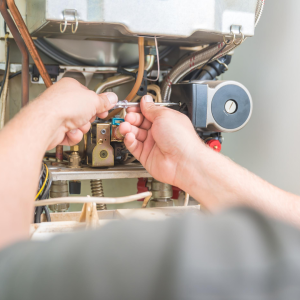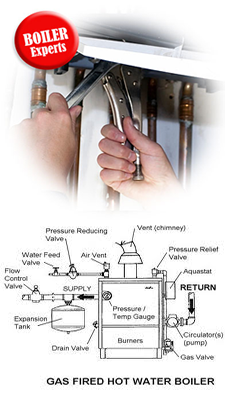Boilers are specific reasons for water radiators. While heaters convey heat in warm air, evaporator frameworks circulate the intensity in steaming hot water, which surrenders heat as it goes through radiators or different gadgets in rooms all through the house. The cooler water then gets back to the kettle to be warmed. High temp water frameworks are frequently called hydronic frameworks. Private boilers by and large utilize gaseous petrol or warming oil for fuel. In steam boilers, which are substantially less normal in homes today, the water is bubbled and steam brings heat through the house, consolidating to water in the radiators as it cools. click here for Oil and gaseous petrol is usually utilized.
Rather than a fan and conduit framework, a kettle utilizes a siphon to flow high temp water through lines to radiators. Some high temp water frameworks circle water through plastic tubing on the floor, a framework called brilliant floor warming. Significant evaporator controls incorporate indoor regulators, aquastats, and valves that direct dissemination and water temperature. Albeit the expense isn’t unimportant, it is by and large a lot more straightforward to introduce “zone” indoor regulators and controls for individual rooms with a hydronic framework than with constrained air. A few controls are standard highlights in new boilers, while others can be added on to save energy.

Heat Siphons
- Heat siphons are only two-way climate control systems (see definite portrayal in the cooling frameworks segment). Throughout the late spring, a forced air system works by moving intensity from the generally cool inside to the somewhat warm outside. In winter, the intensity siphon turns around this stunt, rummaging heat from the chilly outside with the assistance of an electrical framework, and releasing that intensity inside the house. Practically all intensity siphons utilize constrained warm-air conveyance frameworks to move warmed air all through the house. There are two generally normal sorts of intensity siphons. Air-source heat siphons utilize the external air as the intensity source in winter and intensity sink in summer.
- Ground-source (likewise called geothermal, GeoExchange, or GX) heat siphons get their intensity from underground, where temperatures are more steady all year. Air-source heat siphons are definitely more normal than ground-source heat siphons since they are less expensive and simpler to introduce. Ground-source heat siphons, notwithstanding, are considerably more effective and are oftentimes picked by shoppers who intend to stay in a similar house for quite a while or want to reside more economically. The most effective method to decide if an intensity siphon checks out in your environment is examined further under “Fuel Choices.”
- While an air-source heat siphon is introduced similar to a focal forced air system, ground-source heat siphons require that a “circle” be covered in the ground, typically in lengthy, shallow (3-6′ profound) channels or in at least one vertical boreholes. The specific strategy utilized will rely upon the experience of the installer, the size of your parcel, the dirt, and the scene. On the other hand, a few frameworks attract groundwater and go it through the intensity exchanger as opposed to utilizing a refrigerant. The groundwater is then gotten back to the spring.
- Since power in an intensity siphon is utilized to move heat as opposed to create it, the intensity siphon can convey more energy than it consumes. The proportion of conveyed warming energy to consumed energy is known as the coefficient of execution, or COP, with average qualities going from 1.5 to 3.5. This is a “consistent state” measure and not straightforwardly practically identical to the warming season execution factor (HSPF), an occasional measure commanded for rating the warming effectiveness of air-source heat siphons. Changing over between the actions isn’t direct, however, ground-source units are by and large more effective than air-source heat siphons.




